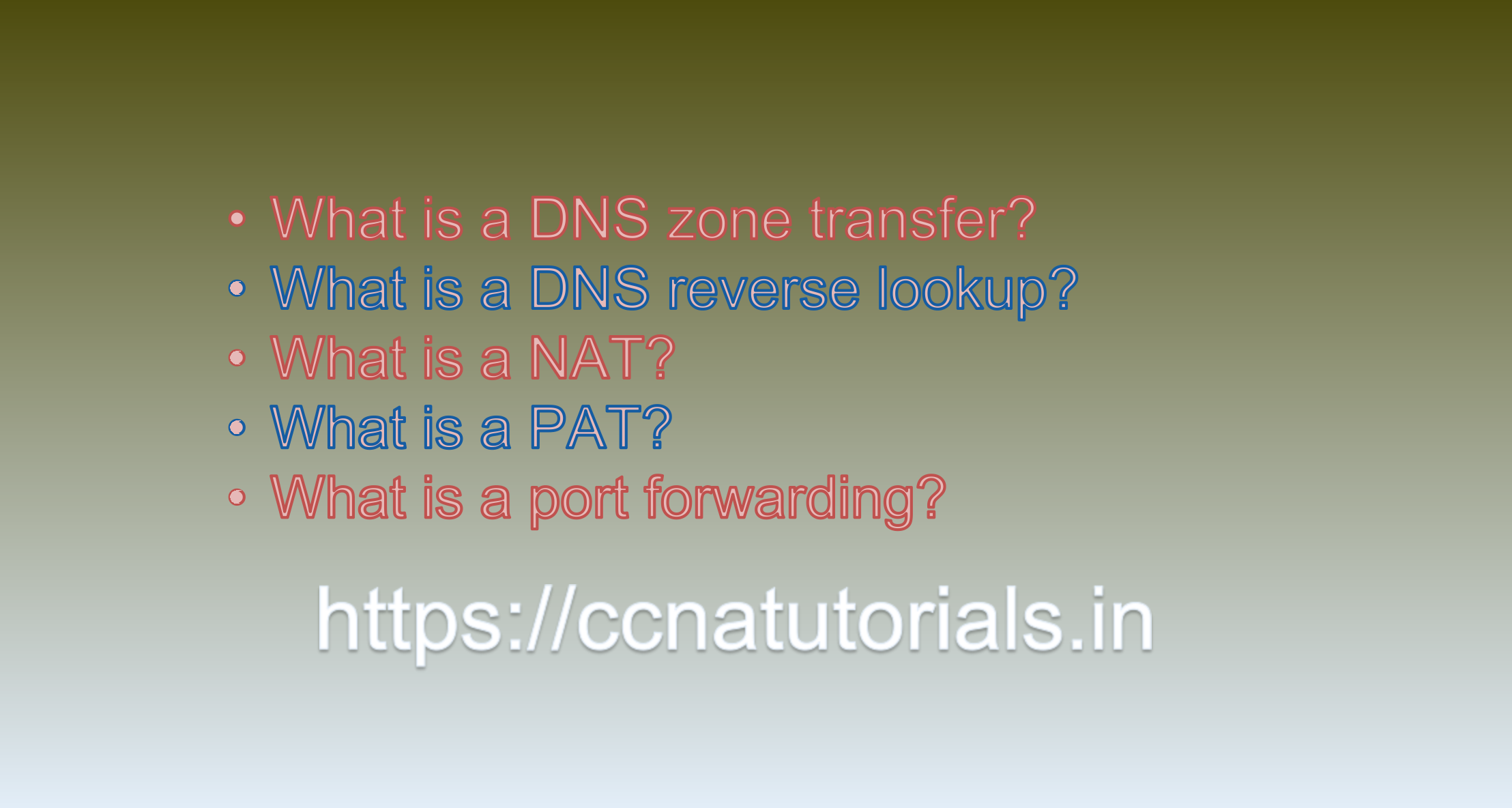Contents of this article
In this article, I describe some CCNA sample questions for practice before appearing in the CCNA 200-301 exam. The following questions are basic questions and related to the CCNA sample questions set 22. There are multiple sample questions set on this website for prior practice online. All questions are described with relevant answers. You can take the following questions and answer as reference for CCNA 200-301 exam. You may also need to do more practice with other websites and books to practice the CCNA sample questions set 22.
Question 1. What is a DNS zone transfer?
DNS zone transfer, also known as AXFR (short for “authority transfer”), is the process of copying the entire contents of a DNS zone from one DNS server to another. It is used to ensure that all of the DNS servers for a domain have consistent and up-to-date information about the domain’s DNS records. During a zone transfer, the primary DNS server for a zone sends a copy of the zone file to one or more secondary DNS servers that are authorized to host the zone. This process is typically initiated either manually or automatically, and can occur periodically or in response to changes in the zone’s DNS records. Zone transfers can be secured using mechanisms such as TSIG (Transaction Signature) to prevent unauthorized transfers and ensure data integrity. This is the answer to question 1 of CCNA sample questions set 22.
Question 2. What is a DNS reverse lookup?
A DNS reverse lookup is the process of looking up the domain name associated with an IP address. Unlike a forward DNS lookup, which returns the IP address associated with a domain name, a reverse DNS lookup takes an IP address and returns the domain name that is associated with it. This is useful for various purposes, such as identifying the origin of network traffic, troubleshooting network issues, and verifying the identity of a server. The DNS system supports reverse lookup through the use of special reverse lookup zones, which are organized according to the structure of IP addresses in the reverse order. This is the answer to question 2 of CCNA sample questions set 22.
Question 3. What is a NAT?
NAT stands for Network Address Translation. It is a technique used to allow devices on a private network to access the internet using a single public IP address. NAT operates by translating private IP addresses used by devices on the private network into a public IP address used on the internet. When a device on the private network sends a request to the internet, NAT modifies the source IP address of the request with the public IP address and forwards the request to the internet. When the response is received, NAT maps the public IP address back to the original private IP address of the device and forwards the response back to the device. NAT is commonly used in home and small business networks to share a single internet connection among multiple devices. This is the answer to question 3 of CCNA sample questions set 22.

Question 4. What is a PAT?
PAT stands for Port Address Translation, and it is a type of Network Address Translation (NAT) that allows multiple devices on a private network to share a single public IP address. In PAT, a router or firewall assigns unique port numbers to each device on the private network, so that incoming traffic can be properly routed to the correct device. This allows for more efficient use of IP addresses, as many devices can share a single public IP address without conflict. PAT is commonly used in home and small business networks to allow multiple devices to access the internet through a single internet connection. This is the answer to question 4 of CCNA sample questions set 22.
Question 5. What is a port forwarding?
Port forwarding is a technique used in networking to redirect incoming network traffic from one IP address and port combination to another. It allows devices on a local network to receive incoming traffic on a specific port or ports by forwarding the traffic to a specific device or server on the network. Port forwarding is commonly used for applications that require external access to specific services, such as gaming servers, web servers, and remote access software. This is the answer to question 5 of CCNA sample questions set 22.
Conclusion for CCNA sample questions set 22
In this article, I described 5 questions with answers related to CCNA 200-301 exam. I hope you found these questions helpful for the practice of the CCNA 200-301 exam. You may drop a comment below or contact us for any queries related to the above questions and answers for CCNA 200-301. Share the above questions If you found them useful. Happy reading!!






